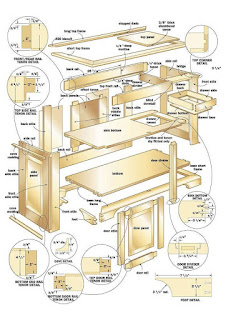Rustic Wood Sign Decor: More Than Just a Pretty Face!
Okay, so you're thinking about adding some rustic wood sign decor to your home. Fantastic choice! It's a trend that's not just pretty, it adds so much character and warmth. But where do you even begin? There's a whole world of options out there, from simple, minimalist signs to intricately carved masterpieces. Let's dive into the wonderful world of rustic wood signs and figure out how you can incorporate them into your own space.
Finding Your Style: What Kind of Rustic Are We Talking?
First things first: "rustic" isn't a one-size-fits-all style. It's a broad term that encompasses a whole range of aesthetics. To help you narrow down your options, let's explore some popular variations:
The Farmhouse Chic Look:
Think crisp whites, light woods, maybe a touch of grey. These signs often feature simple, elegant fonts and phrases like "Gather," "Home Sweet Home," or maybe a charming quote about family. They're clean, inviting, and perfect for creating that cozy farmhouse feel.
Rustic Industrial:
This style blends the warmth of wood with the cool, metallic accents of industrial design. Think reclaimed wood with metal lettering or brackets, perhaps a touch of aged paint. Phrases might be more bold and less sentimental, maybe something about coffee, a favorite hobby, or a witty saying.
Modern Rustic:
This balances rustic elements with a minimalist approach. Think clean lines, natural wood tones, and subtle details. The fonts are often modern and simple, and the phrases are short and sweet. It's a great way to incorporate rustic charm without overwhelming your space.
Vintage Rustic:
This style embraces the patina of age. Think weathered wood, slightly chipped paint, and possibly even distressed lettering. The signs often have a story to tell, evoking a sense of nostalgia and history. You might find vintage-inspired phrases or even old advertisements repurposed as signs.
Where to Put Your Rustic Wood Sign Magic: Placement and Ideas
Now that you've got a handle on the style, let's talk placement! The beauty of rustic wood signs is their versatility. They can truly enhance any room.
Above the Fireplace: A Classic Choice
A large, statement rustic wood sign above the fireplace is an absolute classic. It instantly becomes a focal point of the room, setting the tone for the entire space. Just make sure it's proportionally sized to your fireplace – you don't want it to feel dwarfed or overwhelming.
In the Kitchen: Adding Rustic Charm
The kitchen is a great place for more functional signs. Think charming "Coffee," "Bakery," or "Eat Drink and Be Merry" signs. You could also use smaller signs to label shelves or spice racks.
In the Entryway: Setting the Mood
A welcoming sign in your entryway sets the tone for your home. Something simple like "Welcome" or a more personalized greeting is a great choice. Consider a slightly larger sign here to make a statement as guests enter.
In the Bedroom: Adding Personal Touches
Your bedroom is your sanctuary. A rustic wood sign with a personal quote, initial, or meaningful phrase can add warmth and personality to your personal space. Keep it smaller and more subtle for a calmer feel.
In the Bathroom: Unexpected Elegance
Don't forget about the bathroom! A smaller, subtly rustic sign with a funny quote or a simple message like "Relax" can add a touch of unexpected charm.
Making it Personal: Custom Rustic Wood Signs
Want something truly unique? Consider a custom rustic wood sign! There are many online shops and local artisans who can create a personalized sign based on your specific design and preferences. You can choose:
- The type of wood (reclaimed wood, pine, oak…)
- The size and shape of the sign
- The font and style of lettering
- The color and finish of the sign
- The wording or graphic on the sign (a quote, a name, a logo, etc.)
This is a fantastic way to create a truly one-of-a-kind piece that perfectly reflects your style and personality.
Caring for Your Rustic Wood Sign Treasures
To keep your rustic wood signs looking their best, a little care goes a long way. Avoid direct sunlight, which can fade the colors and dry out the wood. Dust regularly with a soft cloth. For more significant cleaning, you might use a slightly damp cloth (but avoid soaking the wood!), followed by a thorough drying.
Frequently Asked Questions
Q: How do I hang a rustic wood sign?
A: That depends on the weight and size of the sign! Small signs can often be hung using adhesive strips or small nails. For larger, heavier signs, you'll likely need to use screws and wall anchors.
Q: Where can I buy rustic wood signs?
A: You can find rustic wood signs in a variety of places, including online marketplaces like Etsy and Amazon, home decor stores, craft fairs, and even local artisan shops.
Q: Can I make my own rustic wood sign?
A: Absolutely! There are many DIY tutorials available online that can guide you through the process. All you need are some basic woodworking tools and materials.
Q: How do I choose the right size and shape of rustic wood sign for my space?
A: Consider the size of the wall or area where you plan to hang the sign. A smaller sign might get lost on a large wall, while a large sign might overwhelm a small space. The shape should complement the style of your home.
Q: What kind of wood is best for rustic signs?
A: Many types of wood work well! Reclaimed wood offers a unique character, while pine and oak are popular choices for their durability and aesthetic appeal.
So there you have it! Hopefully, this has given you a good starting point for incorporating the charm and character of rustic wood signs into your home. Remember, the most important thing is to choose signs that you love and that reflect your personal style. Have fun decorating!




















